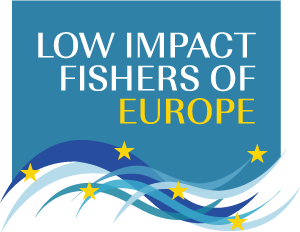Stari morski vukovi moraju naučiti nove trikove
Kraj papira: U hrabrom novom svijetu kontrole ribarstva, sva izvješća o ulovu bit će elektronička
Ovo je prilika koju treba iskoristiti objema rukama: stari morski vukovi moraju naučiti nove trikove!
Bruxelles, 20. veljače 2019.
Brian O'Riordan
Europska uredba o kontroli ribarstva se revidira. Nekoliko nedavnih izvješća, uključujući i izvješća Europskog revizorskog suda, skrenulo je pozornost na neadekvatnost postojećih kontrola ribarstva za ispunjavanje potreba ZRP-a. Trenutačno se pred Europskim parlamentom i Vijećem ministara nalazi prijedlog Europske komisije za izmjene Uredbe o kontroli. Međutim, u Europi se stvari sporo odvijaju i postoji... velika vjerojatnost kašnjenja zbog izbora za Europski parlament u svibnju i zbog obnove Kolegija europskih povjerenika u rujnu.
Stoga će vjerojatno doći do novog saziva Parlamenta, novog povjerenika za ribarstvo i preraspodjele radnih mjesta u Glavnoj upravi za ribarstvo i more prije nego što se postigne veći napredak u vezi s tim predmetom. U svakom slučaju, ribarski sektor može očekivati donošenje nove uredbe do početka 2021. Predviđeno je da će se primjenjivati dvije godine nakon datuma stupanja na snagu, što će nas odvesti duboko u 2023. godinu.
Sektor stoga ima otprilike pet godina da se pripremi za revoluciju koja se predviđa za praćenje plovila i izvještavanje o ulovu. Prema DG Mare, ovo bi trebalo dovesti do kraja papirnatosti. Ključni problem s papirnatim izvještavanjem je ogromna količina posla koju ono stvara za kontrolna tijela.
Elektronička revolucija u izvješćivanju o ulovu posebno će utjecati na flotu malih plovila (SSF) duljine manje od 12 metara. Prijedlog EK-a navodi da “sva plovila, uključujući i ona kraća od 12 metara, moraju imati sustav za praćenje’, i to “svi ribarski brodovi kraći od 12 m moraju elektronički prijaviti svoj ulov“”". Prijedlog naglašava da "“Za plovila duljine 12 metara sada je moguće koristiti mobilne uređaje koji su jeftiniji i jednostavni za korištenje.”", i to "“Svako dodatno opterećenje za male subjekte (male ribare) bit će izbjegnuto uvođenjem jednostavnih i isplativih sustava izvješćivanja o podacima o ribarstvu, koristeći prednosti pristupačnih i široko dostupnih tehnologija mobilnih telefona."..."
Dok flota pasivne opreme kraće od 12 metara čini preko 801 TP3T flote po broju, zapošljava preko 501 TP3T radne snage i može činiti do 501 TP3T ribolovnog napora u smislu dana na moru, flota malog ribolovnog ribolova doprinosi samo 61 TP3T po težini i 121 TP3T po vrijednosti ukupnog ulova EU. U nekim zemljama, na primjer u Nizozemskoj, čini samo 11 TP3T nacionalnih iskrcaja. Sudeći po bruto tonaži (81 TP3T ukupne flote), potrošnji goriva (61 TP3T) i snazi motora (321 TP3T), Sveukupno, flota SSF-a pokazuje znatno manji utjecaj u usporedbi s flotom većih razmjera.
To postavlja pitanje zašto se toliko naglaska stavlja na elektroničko praćenje i izvještavanje o ulovu u maloj floti? Koristi li se malj za razbijanje oraha?
Iako ovo može biti valjano pitanje, digitalne tehnologije pružaju priliku malom ribarstvu da učinkovitije posluje, strateški planira svoja ribolovna putovanja, učinkovitije plasira svoj ulov na tržište i smislenije se uključi u upravljanje ribarstvom. Ukratko, digitalna tehnologija pruža ogromnu priliku za malu flotu, a LIFE potiče SSF da je iskoristi s obje ruke.
Početkom prosinca, u suradnji s državama članicama, DG Mare organizirao je radionicu o digitalnim alatima za malo ribarstvo kako bi se detaljnije razmotrile trenutne inicijative o elektroničkom praćenju i izvještavanju o ulovu. Tri sesije obuhvatile su elektroničko praćenje, digitalne alate za izvještavanje o ulovu i korištenje EFPR-a kao mehanizma financiranja EU-a. Prijedlog EK za novi EFPR nakon 2020., koji je sada pred Europskim parlamentom i Vijećem, ističe da “određene obveze predviđene revizijom Uredbe o kontroli opravdavaju posebnu potporu iz EFPR-a”, uključujući “obvezni sustavi praćenja plovila i elektroničkog izvješćivanja u slučaju malih obalnih ribarskih plovila te obvezni sustavi daljinskog elektroničkog nadzora.”
Potpuno izvješće sa sastanka dostupno je na mrežnim stranicama DG Mare (https://ec.europa.eu/newsroom/mare/document.cfm?action=display&doc_id=57359), zajedno s prezentacijama održanim na radionici (https://ec.europa.eu/fisheries/press/outcomes-workshop-digital-tools-small-scale-fisheries-brussels-4-5-december-2018_en).
Šesnaest prezentacija na radionici i rasprave koje su uslijedile istaknule su da Vrli novi svijet izvještavanja o ulovu ne samo da čeka svoj trenutak, već postoji već nekoliko godina. Tehnološka rješenja, uključujući prepoznavanje glasa, umjetnu inteligenciju, strojno učenje i dronove (podvodne i zračne), već su dostupna i nalaze brzu primjenu u malom ribolovu ribe.
Uz to, koliko god nove mobilne tehnologije bile učinkovite i jednostavne za korištenje, osim ako ne postoji učinkovito sučelje za programiranje aplikacija (API) između mobilne tehnologije i poslužitelja koji bilježi podatke o ulovu, zajedno s potrebnom infrastrukturom za stvarno rukovanje protokom podataka, nova Uredba o kontroli bit će više prepreka nego putokaz za učinkovito i djelotvorno upravljanje ribarstvom u Europi. U tom smislu, međusobno povezana pitanja zaštite podataka i privatnosti razlog su za zabrinutost, posebno u pogledu snimaka nadzornih kamera. Videonadzor je glavni element nove Uredbe o kontroli, posebno u pogledu provedbe obveze iskrcavanja.
U nekoliko prezentacija istaknuto je da automatizirani sustavi praćenja plovila, posebno pri korištenju aktivnih alata, mogu pružiti uvid u aktivnost plovila. Pružajući podatke o položaju, brzini i smjeru određenog plovila, zabilježene promjene brzine i smjera mogu ukazivati na to kada se alat postavlja, vuče i izvlači. To se zatim može usporediti s informacijama iz brodskog dnevnika kako bi se provjerila točnost podataka o vremenu postavljanja i izvlačenja alata te lokaciji ribolovnih područja.
Vodila se velika rasprava o pitanjima sigurnosti na moru, pri čemu je nekoliko sudionika skrenulo pozornost na inherentna opasnost od obavljanja više zadataka istovremeno na malim plovilima u nepovoljnim uvjetima na moru te s opasnim strujama i plimom. Bilo je poziva da se prijavljivanje ulova vrši nakon ulaska u luku, umjesto da se podnošenje obavijesti o ulovu prije iskrcavanja uvede kao obvezno.
Sve veća dob malih ribara također je istaknuta kao zabrinjavajuće pitanje. U nekoliko slučajeva primijećeno je da stariji ribari imaju poteškoća u prilagodbi računalnim i digitalnim tehnologijama. Međugeneracijska obnova poseban je problem u ribarstvu, a SSF nije iznimka. S tim je povezano i pitanje pogrešaka koje nastaju pri unosu podataka, što čini izvješća o ulovu nevažećim.Nekoliko stručnjaka skrenulo je pozornost na potrebu za odgovarajućom obukom i pružanjem dovoljno vremena ribarima da nauče kako koristiti i postanu vješti u korištenju digitalnih sustava za prijavu ulova. Neadekvatna obuka i nepoznavanje digitalnih alata doveli bi do velikog broja pogrešaka koje bi poništile zabilježene podatke.
Konačno, ključna poruka sa sastanka bila je da podaci generirani elektroničkim praćenjem i izvještavanjem o ulovu u svrhu kontrole mogu doprinijeti i mnogim drugim svrhama. Na primjer, višestruka upotreba podataka iz brodskih dnevnika i podataka o određivanju položaja mogla bi uvelike pomoći upraviteljima ribarstva, znanstvenicima i samim ribarima.
♦ ♦ ♦
Resursi:
Malj i matica: https://lifeplatform.eu/control_regulation/
Posebno izvješće Europskog revizorskog suda br. 08/2017: Kontrole ribarstva EU-a: potrebni su veći napori https://www.eca.europa.eu/en/Pages/DocItem.aspx?did=41459

